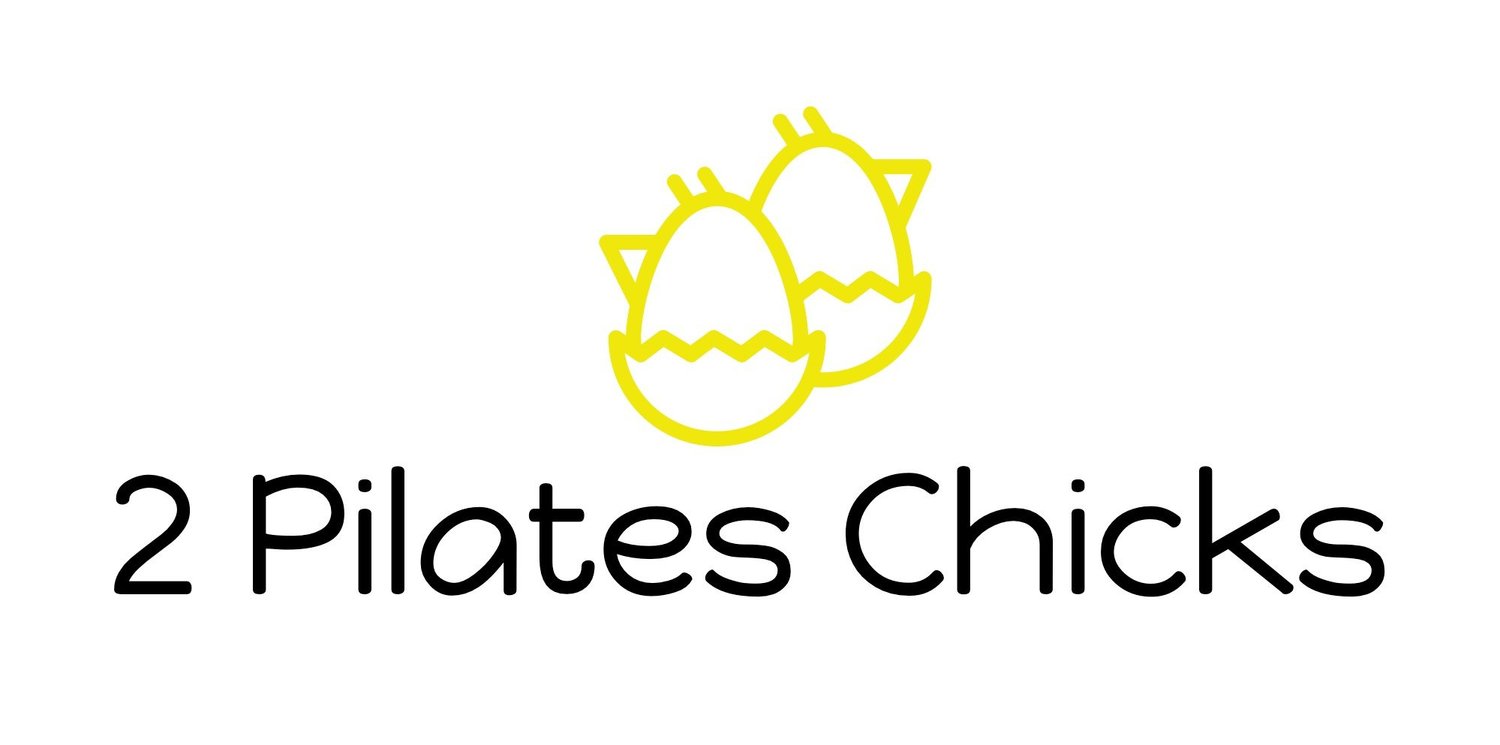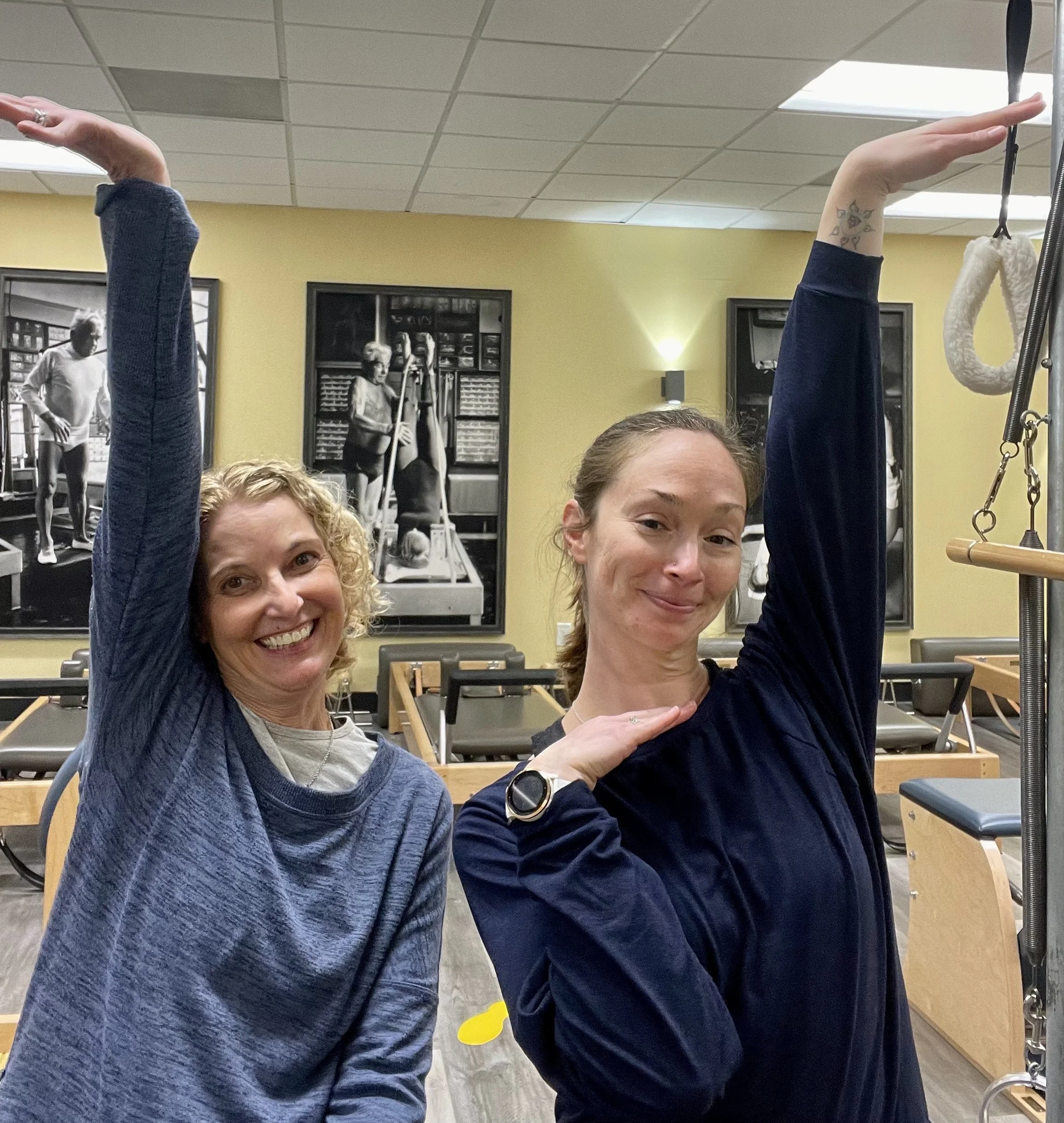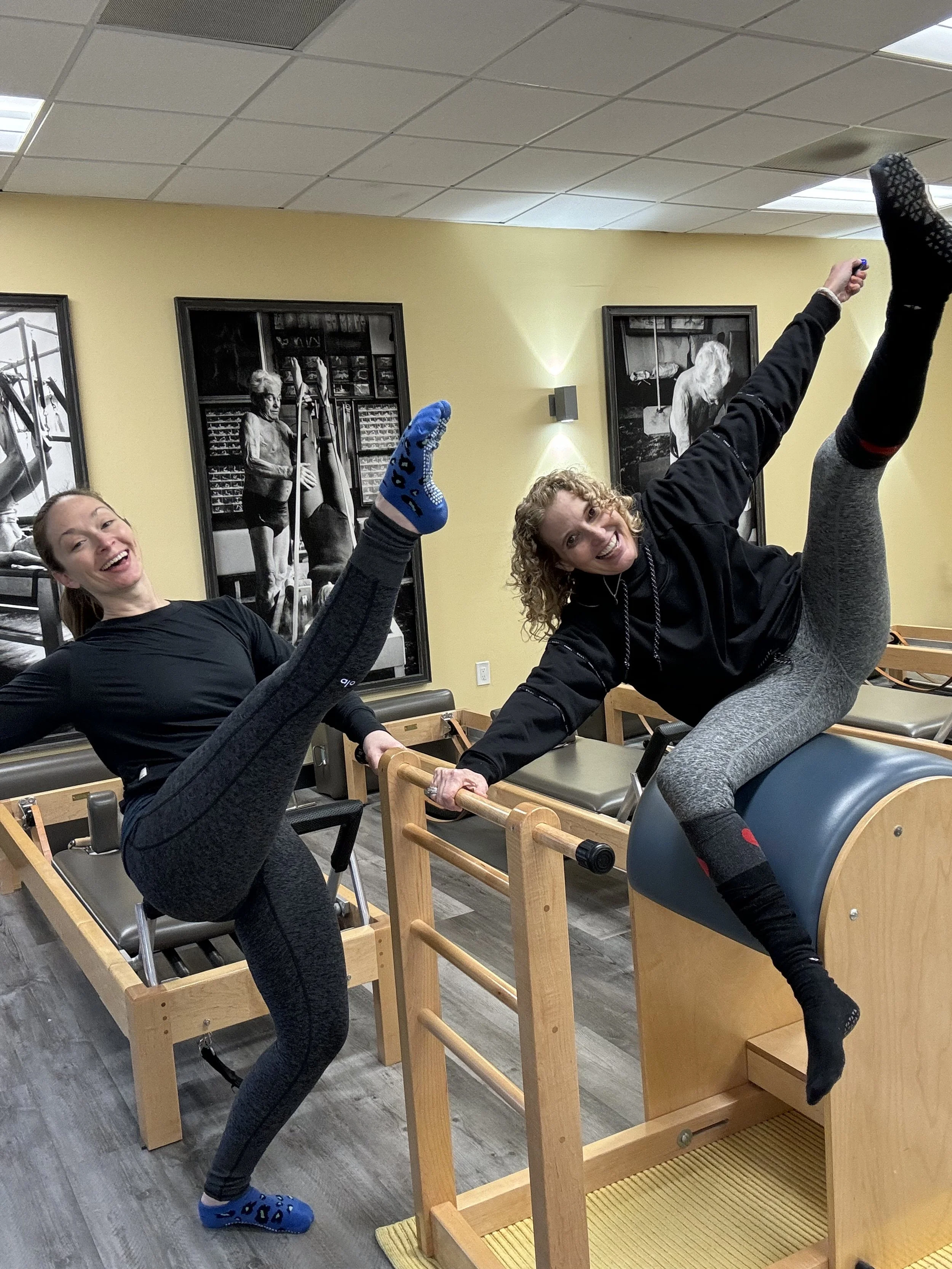The Hypermobility client and Pilates
What is the hypermobility spectrum? How can Pilates benefit hypermobile clients? What are the important factors for Pilates teachers to remember when planning a session for a client with hypermobility?
In Season 5 Episode 11, "Clients with Hypermobility", we discuss working with clients within the hypermobility spectrum, how to plan sessions for clients while avoiding the pitfalls of hypermobile joints, and what these clients most need from their sessions.
Understanding Hypermobility:
Hypermobility is described along a spectrum. Clients may come into the studio who have obvious signs of hyperextension in the knees or elbows, and some may have a proper diagnosis of Ehler's Danlos Syndrome (EDS) or a specified level of the Hypermobility Spectrum Disorder (HSD). In this episode, we don't go into all the specific distinctions of these diagnoses, but we touch on the general ideas to be aware of when teaching these populations.
Because EDS and HSD are a group of hereditary disorders all involving connective tissue, many varying systems throughout the body can be impacted. Clients can have very different needs and symptoms. These can include joint laxity, hyperextensibility, collagen defects, migraines, lung issues, autonomic nervous system effects, etc. HSD is intended to be diagnosed after other possible answers are excluded by the client's medical team, such as EDS.
Teaching Considerations:
Certain skills that are even more important for teachers working with hypermobile clients are understanding, support, empathy, active listening, and observation. The most important realization is that just because a client can achieve a certain position or range of motion (ROM), doesn't mean they should. The hypermobile client needs to build muscular strength and endurance to support the body and to improve proprioception to understand where the joints are without hanging into the end-range capacity. In the studio, we must focus on stacking the joints through the body properly, to reduce the amount of "hanging" on the ligaments. It can be very comfortable for the hypermobile person to hang in the joints, even though over time it over-strains the joints and eventually causes chronic pain. It is comfortable to sit into the joint because it is initially less work before the body is trained. It is challenging to lift and lengthen out of hypermobility while simultaneously working through the full range without sitting into the end range. Many compensations emerge from this passive posture, and over time this creates gripping and bracing in the muscles and tendons, and trigger points flare up as a result of the muscles trying to hold on to support the structure, working when the structure should be stacked and active to remain upright.
With the hypermobile client, prioritize joint stacking and stability, proprioception, muscle connections, postural support, and balance throughout the body. Some clients need to start with a small range of motion to begin to find control, and with others, we can allow them to move to the range in which they know they can maintain control. Teachers must always be aware of the individual needs of the client, but especially with hypermobility, the teacher must observe how to assist the client in achieving balance. We want the client to continue moving to their full movement potential without dumping into the end range of motion.
The hypermobile client needs stabilizing and strengthening in a way that the body can maintain naturally without gripping protectively. Since the body has a great range of motion throughout the entire structure, it's important to reign in the range to initially work predominately in the mid-range to find strength without hanging in the joints. Once the mid-range strength is understood and supported, the client can work into the full range while maintaining the new support and posture throughout the range.
The most common observation in the Pilates studio or any movement practice with hypermobility is the client sitting into the hyperextension in the joints. This is seen in any joint, but most commonly in the knees, elbows, and lumbar spine. Often this will look like someone in footwork on the reformer with the knees fully locked out where it appears the legs bow backward, or holding a plank with the elbows fully extended and protruding past the straight line, or in high swan on the Cadillac with an extreme lumbar extension lifting towards 90°.
This type of client has the capacity for a huge ROM, but just because they can doesn't mean they need to move into those extended ranges. Instead, sessions should be planned around smaller motions where they have to find support to maintain the position to increase their strength and endurance. We don't want to restrict their movement as they still need full body movement and connectivity, but we want to encourage them to move through a controlled range where they can find stability along with the movements. Don't restrict their movement, but train within a safe range where there is control, and as strength and control are improved the range can increase over time through greater connection and control.
Stretching:
Often, the hypermobile client will feel tight and describe a sensation of needing to constantly stretch. Teachers must be aware that these clients can still have sensations of tightness even though they are highly mobile, but that long, sustained stretches can be harmful especially when allowing the client to sit into the hypermobile joint. Hypermobile clients often feel tight because the body is trying to find stability somewhere within the kinetic chain and will have a tendency to brace and grip. Many clients with hypermobility will have chronic pain due to deconditioned tissues causing gripping/bracing, nerve impingements, biomechanical issues, musculoskeletal issues, and fatigue. Instead of allowing the client to focus on stretching the sensation of tightness, teachers should focus on stabilizing and strengthening the region and moving through the controlled range. If a hypermobile client always needs to stretch their hip flexors, focus on gentle strengthening first, such as knee marches or standing leg lifts as tolerated.
Verbal and Tactile Cueing:
Some common verbal cues are ineffective, yet often used for hypermobile clients in an attempt to control the hyperextension seen in the joints. This includes the cue to "soften the knees or elbows", to keep the joint slightly bent. We want the client to find strength without hanging into the ligament at the end range, however, while this cue is an attempt to do that, it is inhibiting the activation of the muscle. Instead of passivity, we can ask for an action with the cue to activate the body region of the hypermobility or to use feedback from props such as bands, springs, or balls to find the strength in the end range without locking out the hyperextension.
These action cues can include pressing, reaching, or pulling to allow them to feel some muscular connection. Asking the client in a plank to pull the mat wide, spiral the arms, or lift themselves off the shoulders can be useful cues for elbow hyperextension. A client sitting into their knee hyperextension can be asked to reach out of the heels, push the footbar away, and lengthen the back of the knees toward the floor. These action cues can begin teaching the client to think about where the joint is, and to start to feel end range versus muscular control. This takes time, repetition, and practice, and will need reminding.
Tactile feedback from props can be extremely beneficial when beginning to strengthen with hypermobility. Because of the great ROM in most joints of the hypermobile client, tactile feedback can assist the client in finding their position in the space. Often when correcting habitual, maladaptive postures, the client will initially feel like it's an overcorrection as they gain awareness of where the body should be placed. By using external props to give the body feedback they can initially find better positioning and alignment from the support and resistance of the props. In Pilates, we can use the springs as a tactile cue to push into to feel how to lift out of the body such as in a sinking hip or shoulder. These aids can teach how to lift out of the joint, recruiting muscles for strength and support instead of hanging in the joint where it's easier but more dangerous. Pushing into a mat, spring, band, or ball helps retrain proprioception teaching the body how to feel the proper alignment.
Teachers who use lots of tactile, hands-on cueing, must be aware of limiting forceful pushing and pulling with the hypermobile client. The client is capable of moving into extreme positions, but it is not beneficial to do so. With hands-on cues the teacher should focus on what will give the client feedback, building proprioception to feel how to lift or push into the tactile cue with action instead of forceful passive cues. If the teacher is doing assistive stretches with the client it is difficult to feel the joint end range resistance and since the joint is capable of that range, the client may be pushed past what is safe.
In Conclusion:
Hypermobility will not be fixed, as it is a natural genetic composition of this client's body and structure. The goal of strengthening through Pilates for the hypermobile client is not to "fix" the client but to retrain. Our goal is to retrain the body and increase muscle strength and tone as much as possible so that the muscles can compensate for the impact of the defective connective tissues and reduce the reliance on other supporting structures such as the ligaments. Depending on where a client is on the hypermobility spectrum, they may have a harder time conditioning and can decondition more quickly. We want to train them to find support and connections throughout the body, balance where the body is gripping or bracing, and be in more supportive postures throughout the day to reduce pain and increase capability outside the studio.
This will be a long-term practice in finding the appropriate balance and will be continuous learning to retrain new muscle patterns. Pilates teachers can guide these clients with proper verbal cueing to find muscle connections, props to find tactile feedback in the joints, and appropriate hands-on cueing to build support and full-body connectivity. It will be a life-long practice that will benefit them both in and out of the studio for long-term physical health.






